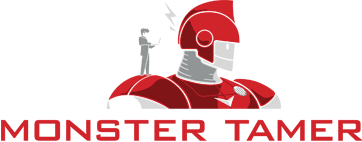You’ll know a website is blacklisted when you attempt to access a website and receive a red warning that says something like, “Visiting this website may harm your computer”.
If your site ends up on this URL blocklist, you might as well not have a website at all since over 90% of your traffic will likely vanish overnight. On top of that, fixing the issue could put you thousands of dollars in the hole if you’re caught unprepared. In this video we talk about what a URL blocklist is and highlight just how important it is to maintain your website’s security. Neglecting security could pose a threat to your reputation, your revenue, your SEO, and most importantly, your users.
What is a URL Blocklist? (Also known as Blacklist)
In a nutshell, a URL blocklist, also known as blacklist, is a process where search engines like google and bing, along with other authorities blacklist or remove a website URL from their respective index. A blacklisted website won’t appear on search engine results pages and browsers will display large red warnings to users advising them not to enter.
Why do sites end up on a URL Blocklist?
The simple answer is they’ve been detected as malicious and unsafe for users to access. A malicious website contains any of the following: malware, phishing schemes, trojan horses, unsafe plugins, seo spam, and so on. If you stumble upon a malicious website like this, you’re most likely entering a hackers territory where your data, keystrokes, and clicks are not secure.
You may be wondering how your website could end up on a block list like this.
You’ve likely followed the rules and haven’t implemented any malicious tactics, so what’s wrong? Well, every day, cyber criminals compromise thousands of websites. Hacks are often invisible to users, yet remain harmful to anyone viewing the page—including the site owner. Your site may be infected without you ever knowing. Malicious website code can range from stealing sensitive information, disrupting availability, redirecting visitors to spam pages, completely hijacking the website, or even infecting the visitor with some other piece of malware.
Google can and will penalize businesses that aren’t aware their sites have been infected or hacked. The result is a significant loss in traffic and revenue.
Take action before It’s a problem.
All of this is a headache best avoided. While the cleanup of a hacked site can sometimes be as simple as reverting to a previous backup, not every site owner depending on their host will have backups available, and some will be forced to have a professional scrub the site and do a full rebuild and install. This is a tedious and expensive process.
Secure your site.
Priority #1 for any website owner is to take security seriously and ensure you’re implementing the fundamentals that keep you and your users safe. This entails working with a secure web host provider, one with regular website backups and up to date security. Ensuring the software and plugins on your site are reputable and up-to-date with the latest versions. You have an active SSL certificate for secure online connection from the users to the server. Unique smart passwords for all your logins.
Fore more information on how to maintain high level security on your website as well as how to remove viruses if they do end up on your site, stick around for future blog posts and videos from us. We’ll be going over all of it and more.
